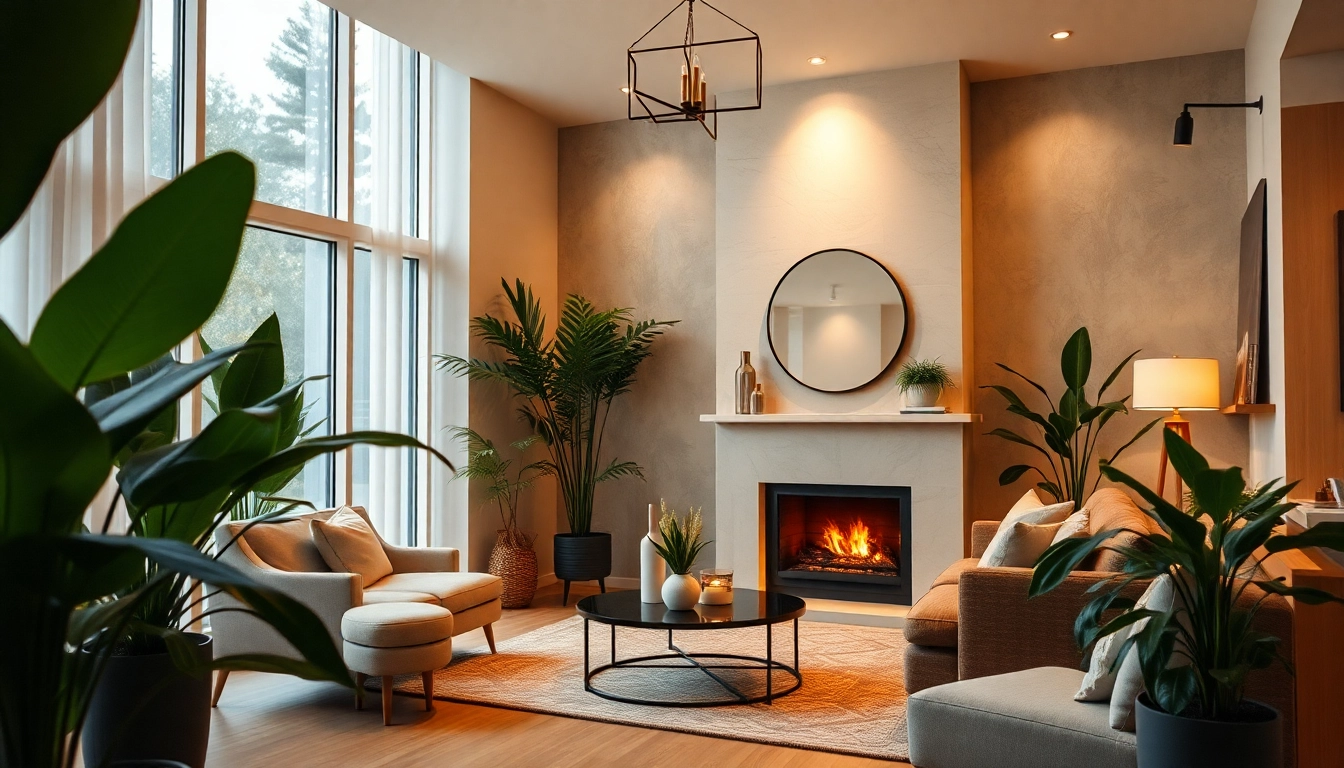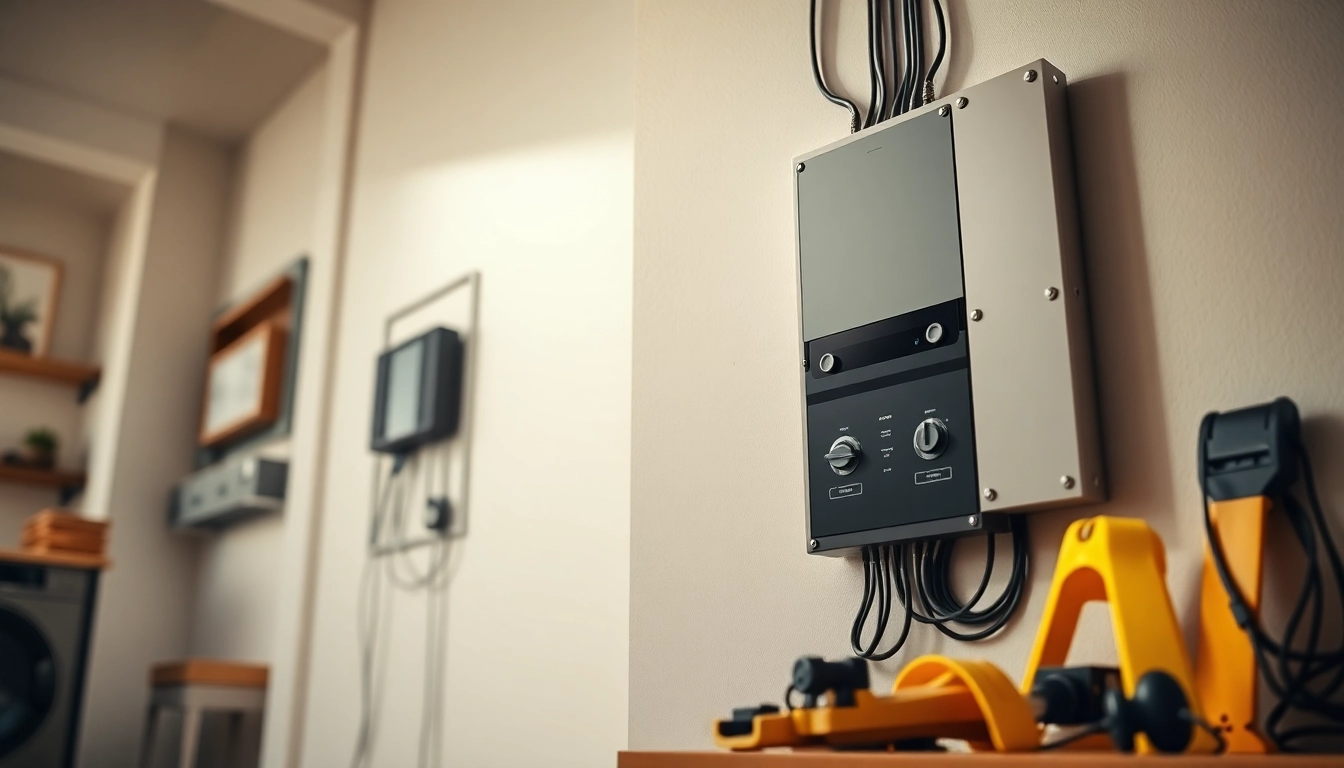Understanding Movable Glass Partitions
What Are Movable Glass Partitions?
Movable glass partitions are innovative architectural features that provide flexibility in interior design, allowing spaces to be easily reconfigured without the need for permanent walls. These systems are crafted from high-quality glass, which not only allows natural light to flood into the environment but also creates a sense of openness. This versatility makes them an excellent choice for a myriad of applications, including corporate offices, retail environments, and residential spaces. For an in-depth look at these transformative solutions, explore our range of movable glass partitions.
Benefits of Using Glass Partitions
Incorporating movable glass partitions into a space offers numerous advantages. First and foremost, they enhance natural light, which can improve mood and productivity. Additionally, they foster a more collaborative environment by visually connecting different areas while still allowing for sound isolation—a critical component in busy commercial spaces.
Moreover, these partitions are aesthetically pleasing. They can serve as a stylish design element and come in various styles, finishes, and configurations. They are also customizable, providing an opportunity to match any aesthetic, from modern minimalist to luxurious and elaborate. Some other benefits include:
- Space Efficiency: Movable glass partitions allow for maximizing usable space while offering ease of accessibility.
- Acoustic Control: Many systems provide soundproofing features that help to define areas without sacrificing privacy.
- Easy Maintenance: Glass surfaces are easier to clean and maintain than traditional drywall.
Types of Movable Glass Systems Available
Movable glass partitions come in various configurations, each suited for specific needs. The primary types include:
- Sliding Systems: These systems slide along a track, allowing for a smooth opening and closing action. They are often used where floor space is limited.
- Folding Systems: These consist of panels that fold against each other to create more considerable openings. Ideal for spaces that require an adaptable area.
- Hinged Systems: Glass panels are mounted on hinges and can swing open or closed. They work well for smaller openings or as a simple room divider.
- Stacking Systems: Multiple panels can stack to one side of an opening for seamless integration. This system is useful in large spaces needing flexibility.
Applications in Different Environments
Commercial Spaces and Offices
In corporate environments, movable glass partitions optimize efficiency by creating multifunctional spaces. Workspaces can be transformed from open-plan settings to private offices or meeting rooms within minutes. This adaptability is especially beneficial in spaces where meetings and collaborations are frequent.
For example, tech companies often utilize movable glass partitions to adjust their workspace layout according to project needs or team sizes, encouraging creativity and collaboration. Design firms may also use these systems to showcase their innovative spaces, combining openness with functionality.
Retail Design and Customer Experience
In retail, movable glass partitions can transform the shopping experience. They allow for quick reconfigurations of layouts to highlight new merchandise or seasonal displays. Visibility is also enhanced, inviting customers to explore different areas of the store while maintaining functional separation of products.
Some retailers are incorporating technology with their glass partitions, like digital displays or translucent panels that can switch between transparency and opacity—giving them further flexibility to engage customers effectively.
Residential Use of Movable Glass Partitions
In residential settings, movable glass partitions serve to enhance modern living spaces. Homeowners are increasingly using these systems to create open-floor plans while retaining the option for privacy in bedrooms or offices. Additionally, they can help define spaces in studio apartments, making smaller areas feel more expansive.
Many homeowners opt for custom designs that resonate with their style, utilizing decorative features, frosted glass for added privacy, or integral blinds between glass layers. This makes them not only functional but also a striking design choice.
Installation and Maintenance Considerations
How to Choose the Right System
Selecting the appropriate movable glass partition system involves assessing the specific needs of a space. Consider factors such as:
- Purpose: Define the intended use of the partition. Will it need to allow sound privacy, or is it simply for spatial division?
- Space Availability: Measure the intended area to determine what type of partition will fit without obstructing pathways.
- Aesthetic Compatibility: Ensure the system complements the existing decor and atmosphere of the surrounding space.
- Budget: Evaluate total costs including material, installation, and any long-term maintenance.
Installation Process Overview
The installation of movable glass partitions typically involves several key steps:
- Planning: Develop a detailed plan that outlines the dimensions, layout, and type of glass system to be used.
- Preparation: Clear the installation area and ensure that flooring and walls are prepared to accept the new system.
- Framework Installation: Install the necessary tracks or frameworks that will hold the glass panels in place.
- Panel Installation: Carefully mount each glass panel, ensuring they are level and securely anchored.
- Final Adjustments: Make any necessary adjustments to ensure smooth operation and check for safety.
Maintenance Best Practices
Maintaining movable glass partitions is crucial to ensure their longevity and functionality. Here are some best practices:
- Regular Cleaning: Consistently clean the glass surfaces using non-abrasive cleaners to avoid scratches and maintain clarity.
- Inspect Hardware: Regularly check tracks, hinges, and rollers for signs of wear or damage and address issues promptly.
- Periodic Lubrication: Apply lubricants to moving parts to ensure an effortless opening and closing mechanism.
Cost Factors and Budgeting
Calculating Costs of Movable Glass Partitions
The cost of movable glass partitions can vary significantly based on a variety of components:
- Material Choice: Different types of glass (e.g., tempered, laminated) and framing materials can influence pricing.
- System Type: Sliding systems generally cost less than custom folding systems due to complexity.
- Size and Configuration: Larger spaces or unique configurations will typically incur higher costs.
On average, costs can range from $50 to $200 per square foot installed, depending on these factors.
Benefits vs. Installation Costs
The initial investment in movable glass partitions should be evaluated against their potential benefits. From improved employee productivity due to enhanced natural light to increased customer engagement in retail environments, the return on investment can be significant. Over time, these cost-effective partitions can lead to completed projects with more versatile spaces that serve evolving needs.
Long-Term Value and ROI
When evaluating the long-term value of movable glass partitions, consider their adaptability to changing business or residential needs. The ability to reconfigure spaces can save significant costs associated with future renovations, making them a smart financial choice. Additionally, their aesthetic appeal can enhance property value, making them a worthwhile investment in a fluctuating real estate market.
Future Trends in Movable Glass Partition Design
Technological Innovations
Technology will continue to play an integral role in the evolution of movable glass partitions. Smart glass technology, which alters transparency with the push of a button or an app, is on track to become more prevalent. This advancement can provide users unprecedented flexibility in how they utilize their spaces.
Other innovations include integrating soundproofing materials that enhance privacy in office settings and homes, thereby addressing some of the limitations that traditional glass systems face.
Sustainability in Glass Partition Design
As environmental concerns grow, the focus on sustainable materials and practices is becoming paramount in the production and installation of movable glass partitions. Manufacturers are increasingly using recyclable materials and developing eco-friendly production processes to reduce their carbon footprint.
Additionally, incorporating energy-efficient glazing can help regulate indoor temperatures and lower heating and cooling costs, adding to the sustainability profile of these innovative systems.
Predictions for Market Growth
The market for movable glass partitions is expected to grow significantly in the coming years. With increasing urbanization and a shift towards flexible workspace design, industries will continue to seek versatile solutions that adapt to changing needs. The integration of smart technology and sustainability will likely drive innovation, making movable glass partitions a long-lasting trend in modern architecture.



